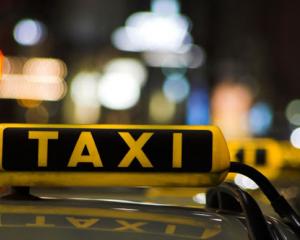
Emissions from the rising number of cruise ships at Port Chalmers are unlikely to be monitored any time soon.
However, Port Otago says international regulations will mean all cruise ships visiting from next year will meet new, more stringent standards.
Neither the Otago Regional Council nor the National Institute of Water and Atmospheric Research monitors air quality at the port.
Cruise ships typically use heavy fuel oil which is one of the dirtiest in terms of pollutant emissions and can have adverse impacts on human health.
Dunedin's cruise ship numbers are quickly rising, from 89 in 2017-18, 113 in the most recent season to 130 booked next season.
Dr Gerda Kuschel, who co-founded Auckland air quality consultancy Emission Impossible, calculated a single cruise ship visit in Wellington was the equivalent to more than 200,000 extra cars per day.

Regional council senior policy analyst Sylvie Leduc said it did not monitor air quality from large ship emissions as it did not have the regulatory power to set emission limits on the vessels.
''However, we recognise that there may be a need to reassess this in the future as marine traffic to Port Chalmers increases. This has been under discussion and it is something we will be examining.''
From next year, ships from countries signed up to the international Marpol treaty will need to meet a sulphur fuel limit of 0.5%.
New Zealand has not signed the treaty.
Port Otago chief executive Kevin Winders said despite this, the home countries of the ships arriving in Dunedin had, so they would all be compliant from the beginning of next year.
The port worked closely with the cruise industry on the issue, and many were already complaint.
It had received a few emissions complaints in Port Chalmers over the years. However, they were mainly from the visuals of smoke coming out of ship funnels.
A few overseas ports required ships to plug in while docked using a method called cold ironing.
This was an emerging technology and certainly not the norm, he said.
''We expect it to be more mainstream over time.''
However, this would require a network of ports in New Zealand to create the infrastructure to allow them to connect.
Emission Impossible examined readings at the Mount Maunganui port and found four exceedances of the lower limit for sulphur dioxide in January and one breach of the upper limit, which appeared to arise from cruise ships at the port.
The group is pushing for New Zealand to join the international treaty.
Unless there was monitoring, nobody could say for sure what the exceedances at Port Chalmers were, Dr Kuschel said.
New Zealand Cruise Association chief executive Kevin O'Sullivan said the main way cruise ships were complying with new regulations was by installing expensive ''scrubbers'' which removed much of the sulphur dioxide from emissions.
The companies which could not do this were using marine gas oil, which was essentially diesel.
This was cleaner than heavy fuel, but also more expensive, he said.
Another way was to buy low-sulphur oil. However, this was difficult to find in New Zealand.
Comments
Unless there was monitoring, nobody could say for sure what the exceedances at Port Chalmers were, Dr Kuschel said. And lets face it, nobody in the local tourist industry would want that information available would they? If you are a local tour operator and would like to see something done about monitoring please accept my apologies for making an incorrect statement.
Cruise liners with flatulence. Act now, before you are mistaken for a whale, off Baja, California.












